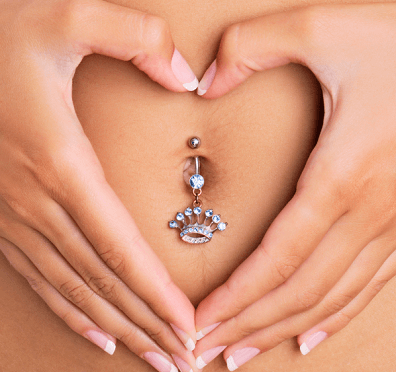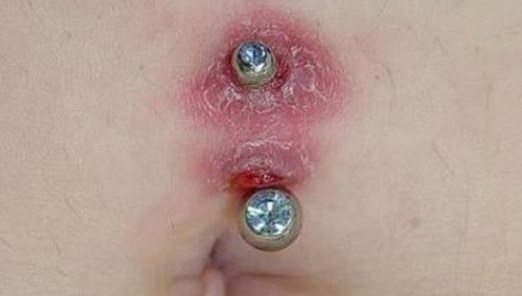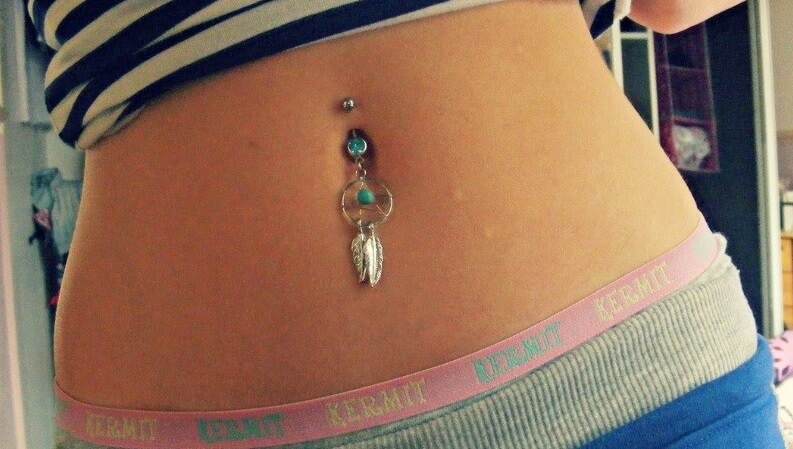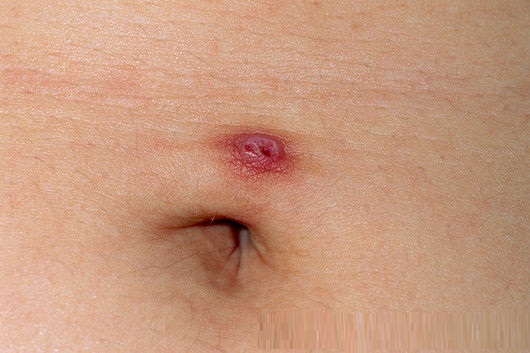How To Get A Skinny Belly Button
Get a Piercing on Belly Button: Procedure and Aftercare!
Wanna a fancy piercing on your belly button? Do you know how it's done? Do you know how to take care of it afterwards? No worries for we get it all covered!
 Also known as the umbilical dip piercing and navel piercing, belly button piercing ranks at the top of all popular body piercings. The most common technique involves piercing the upper rim of the navel. Despite the name, the belly button or true navel is not actually being pierced. If you want a belly button piercing, the most important step is to find a reputable piercer. Some areas require a license and documentation of training that qualify them as a certified trained piercer.
Also known as the umbilical dip piercing and navel piercing, belly button piercing ranks at the top of all popular body piercings. The most common technique involves piercing the upper rim of the navel. Despite the name, the belly button or true navel is not actually being pierced. If you want a belly button piercing, the most important step is to find a reputable piercer. Some areas require a license and documentation of training that qualify them as a certified trained piercer.
How Is Belly Button Piercing
Here are the common steps for piercing the belly button:
- The piercing room must appear clean and smell clean. The chair should be clean and have either a disposable or washable covering.
- The piercing professional should wash his/her hands thoroughly before putting on a fresh pair of surgical gloves. A mask is optional.
- Your belly button will be prepared by using a surgical scrub to clean and sterilize the area inside and around the navel.
- Topical anesthetic may or may not be used.
- The piercing expert will then grasp the skin and puncture with a surgical needle or puncture tool. Most commonly this will occur from just inside the opening of the navel and be directed towards your head. Mild pain is normal, but this part is relatively quick.
- The needle is then replaced by your new belly button piercing.
- The area will be cleansed at the end and you are all set with your brand new belly button piercing.
- Avoid the temptation to touch or play with your new piercing even after it is fully healed.
Watch this short video to see an actual belly button piercing being performed by a skilled and trained piercing artist:
How Much Does Belly Button Piercing Cost?
The following are a few must-know facts about what affects the cost of belly button piercing:
- One of the biggest cost is the material of the piercing is made out of. Options vary widely and consist of simple designs all the way up to very intricate and complicated works of art. Several popular options include silver, gold, titanium and other metal alloys. The choice greatly influences the overall cost.
- Like any purchase, shopping around is key. Prices vary from piercing artist to piercing artist. Do a bit of research and find yourself a reputable piercer who offers a good price.
Take into consideration the above information, belly button piercing cost on average between $40 and $100. The price is never fixed and be sure to negotiate. If you already have your own jewelry, the cost should be less, around $30. No matter what you decide, be sure that a reputable and licensed piercing salon does your piercing.
What Risks Will You Face When Getting Belly Button Piercing
There are some of the most common risks of the belly button piercing:
- Naval piercing takes a long time to heal and if proper care of the wound is not taken, it may get infected, most commonly, an abscess. And what's worse, the infection may spread if left untreated.

- Improper healing of the wound may result in scarring and sometimes even keloid formation.
- Other less common risks are excessive bleeding, pain and allergic reactions to the metal in the jewelry.
- You may get infected with transmittable diseases such as HIV or hepatitis through unsterilized needles.
- Young teenagers (age less than 16 years) should avoid getting naval piercing. The growth of the body may alter the position of the piercing and it may move upwards.
How to Take Care of Your Belly Button Piercing
Think of your piercing as minor surgery. The healing time varies from person to person, but generally it takes several weeks. Some heal slower and some heal faster, so this process can take two or three months for some and much longer for others.
Follow these aftercare instructions closely to help speed up the healing process and minimize complications.
1. Things to Do
- Wash with an antibacterial soap. There are always bacteria present on skin and washing with an antibacterial soap is a great way to prevent infection. Make sure you wash your hands before you begin to clean the newly pierced area. You can also soak a Q-tip in warm water or peroxide and then use it to remove any crust that might be around the piercing site.
- Clean with salt water. Most bacteria hate saltwater and using this method is an excellent idea. Mix a small dash of salt with a cup of warm water, invert this cup over the belly button and let it soak for about 10 minutes. Then rinse off and dry gently with a paper towel or soft cloth.
- Apply cotton swabs. Instead of touching the area with your fingers, use a cotton swab, but bear in mind that cotton towels harbor bacteria and should be avoided. Do not reuse cotton swabs and discard them after every single use.
- Try natural healing agents. Tea tree oil and lavender oil are powerful natural healing products and work great on belly button piercings. Emu oil has also been shown to produce great results and accelerate healing. Over-the-counter medications containing vitamin C, vitamin D and zinc also speed up the healing of belly button piercings.

- Shower instead of bathing. Understand that shaving may cause small fragments of hair got lodged in the piercing site. This undoubtedly will cause an infection. For this reason, if you have a newly pierced belly button, do not shave or wash your hair when you're using a bathtub. The best option is to just have a shower. That way the water is constantly running and moving over the piercing site and your body. If you must use a bath, be sure to avoid any bath oils or perfumed soaps as this will truly irritate the piercing site. Try shaving and washing your hair before you get in the bathtub.
- Be wary of sleep positions. Most of you move around a lot while sleeping. Try to avoid rolling onto your stomach as this will rub your piercing and irritate it. You can place an extra pillow under each of your arm to make sure you are lying on your back when sleeping. Another option is to sew a tennis ball to the front of your shirt at the chest level. This will undoubtedly keep you off of your stomach and avoid traumatizing the freshly pierced navel.
- Watch for infections. Classic signs of infection include redness, increased pain, warm and drainage. If the drainage is discolored such as yellow or green, or if the drainage has a bad odor, it undoubtedly has become infected. If any of this occurs, be sure to contact your piercer and also get in touch with your doctor. If the drainage is clear or semi-opaque, it means your piercing is healing fine. A small amount of bleeding is common and should not cause alarm.
2. Things to Avoid
- Using antibacterial ointments. Antibacterial ointment clogs pores, traps excessive moisture and inhibits healing. Some people are allergic and highly sensitive to over-the-counter antibacterial ointment components.
- Changing the jewelry. Resist the temptation to change the jewelry: first, your new jewelry may irritate your new piercing; second, if you leave your piercing alone for some time, it will cause the piercing track to close, even prematurely. And forcing the jewelry back into the piercing track will traumatize the tissue, greatly impair the healing process or generate excessive scaring.

- Submerging in water. Swimming pools, hot tubs and lakes are teaming with bacteria. Avoid exposing your piercing to this type of water. If you must get wet, be sure to use a waterproof bandage.
- Applying skin care products. Suntan lotion and skincare products will also clog pores in confutation around the piercing area.
- Using alcohol and peroxide. Try to avoid alcohol and hydrogen peroxide as both will dry out the skin. The peroxide may actually have a corrosive effect on the metal and prevent your wound from healing.
- Wearing tight clothing. Tight fitting garments will irritate and aggravate the piercing site, which further delay healing and increase the chance of infection and a bad cosmetic appearance.
- Touching. Resist the temptation to touch or play with the piercing and jewelry. The only time it should be manipulated is during the cleaning process. Always wash your hands before beginning the cleaning process of your new belly button piercing.
How To Get A Skinny Belly Button
Source: https://www.md-health.com/Belly-Button-Piercing.html
Posted by: vanmetersamintme.blogspot.com

0 Response to "How To Get A Skinny Belly Button"
Post a Comment